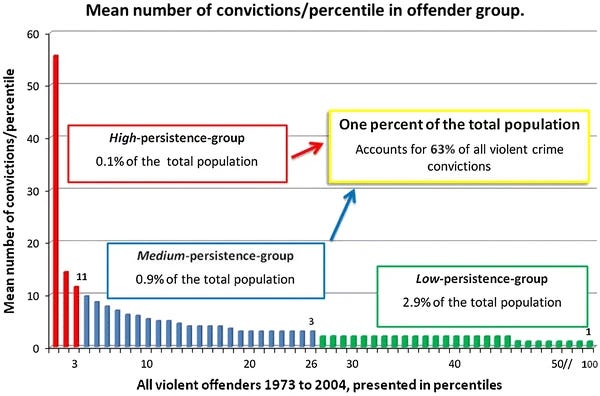12 Things Everyone Should Know About Criminal Psychology
Unmasking the criminal mind

This is the latest post in my “12 Things Everyone Should Know” series. You can read the full collection here.
Crime is a topic of interest for most people in most times and places: how to avoid it, how to prevent it, how to get away with it, and so on. In this post, I’ll explore 12 of the best-established, most fascinating findings from the field of criminal psychology. Among other things, we’ll look at sex differences in crime, the nature and nurture of crime, and how intelligence, personality, and even political orientation influence criminal behavior. Hope you enjoy it!
1. Men commit more crime than women. Much more.
As with many sex differences, the sex difference in crime-proneness peaks in late adolescence and early adulthood, when men’s violence and risk taking skyrocket. Evolutionary psychologists Margo Wilson and Martin Daly famously dubbed this the young-male syndrome, which they linked to competition for status and mates - not just in our species but in many.
2. A small number of criminals commit the vast majority of crimes.
Criminality follows the Pareto principle, where a small number of people are responsible for a large fraction of an activity or outcome. One famous study concluded that just “1% of the population [is] accountable for 63% of all violent crime convictions.” A clear implication is that understanding and addressing the behavior of high-risk, repeat offenders is crucial for reducing crime levels.




